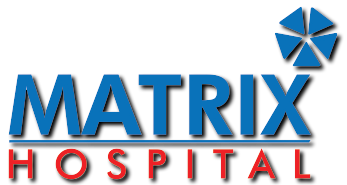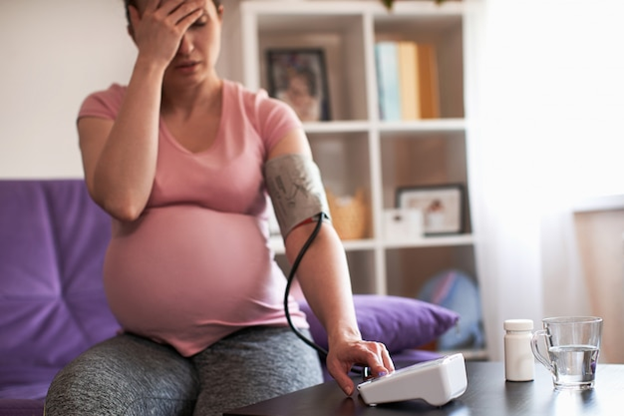Preeclampsia involves high blood pressure and potential organ damage during pregnancy. It’s a serious condition that can turn dangerous without proper care. Preeclampsia generally occurs after the 20th week of pregnancy, needing close monitoring to keep mom and baby safe.

Being aware of preeclampsia is important for both the mother’s and baby’s health. Detecting it early helps in managing health issues before they get severe. By knowing its symptoms and risks, interventions happen sooner, easing complications considerably. Education and regular doctor visits can ensure both mother and baby stay healthy.
This blog’s purpose is to provide thorough insights into preeclampsia, including recognizing common symptoms and understanding its risks. Moreover, focusing on prevention gives both expectant mothers and healthcare providers the necessary knowledge. This way, readers become proactive in managing their pregnancies, cutting down potential problems through informed choices.
What is Preeclampsia?
Preeclampsia means high blood pressure plus some organ damage risks. The trouble often hits the kidneys and liver hardest during pregnancy. Protein leaks into urine about 20 weeks in, signaling possible kidney damage.
Around twenty weeks into pregnancy, preeclampsia usually shows up, sometimes even later after childbirth. Doctors watch carefully at these times to catch any early signs of this dangerous spell. Catching it sooner means less worry for both mother and child.
For mothers, preeclampsia poses a real threat to life with stroke or seizures. It can even harm growing babies by causing small size or early arrival. Keeping close watch can lead to better health for moms and their little ones.
Unraveling the Causes and Risk Factors
The placenta plays a big role in preeclampsia. If it doesn’t form properly, it can affect the mother’s blood pressure, leading to potential complications.
Certain factors can raise the risk of preeclampsia for pregnant women. First-time mothers and those expecting twins or more are at higher risk. Additionally, issues like diabetes or high blood pressure can increase chances. Women who are younger than 20 or older than 35 are more at risk too.
Some scientists think changes in the immune system might affect preeclampsia. Altered immune responses may harm the placenta’s function, while changes in blood vessels can cause reduced blood flow. Exploring these possible causes is crucial to understanding preeclampsia better.
Spotting Preeclampsia Symptoms Early
Routine visits during pregnancy help catch preeclampsia signs early on. Doctors will watch blood pressure and check urine to spot problems quickly.
Common signs of preeclampsia include high blood pressure readings. Urine may show extra protein, signaling an issue. Other signs include bad headaches and sudden weight gain or changes in sight. Recognizing these leads to quicker medical care.
If signs of preeclampsia are found, seeing a doctor fast is key. Early action stops it from getting worse, keeping moms and babies safe. Acting quickly helps lower serious risks for both mother and child.
Proactive Steps for Prevention and Risk Management
Regular prenatal visits are crucial for the health of both mother and baby. These regular checkups help detect any signs of preeclampsia early, allowing for quick interventions. By frequently monitoring blood pressure and protein levels in urine, healthcare professionals can tailor care plans to specific needs, promoting a safe pregnancy. Missing these appointments may increase risks that could have been easily managed with routine doctor visits.
A balanced diet and exercise routine play important roles in preventing preeclampsia. Eating leafy greens, lean proteins, and whole grains supports maternal well-being while reducing sodium intake. Regular physical activities like walking or prenatal yoga benefit heart health too. These lifestyle choices empower pregnant women, reducing the chances of complications during childbirth. Following a healthy lifestyle helps in avoiding preeclampsia while nurturing overall body health.
For those at higher risk of preeclampsia, low-dose aspirin is often recommended. Taking a daily dose between 75-150mg can significantly lower the risk when used wisely. Always consult with your healthcare provider before starting any medication like aspirin, especially considering other health conditions. This approach effectively reduces preeclampsia risks while supporting a safe pregnancy journey.
Knowing When to Seek Medical Help
Recognizing when to visit a doctor is crucial, especially if you experience severe headaches or sudden vision changes during pregnancy. Intense abdominal pain, swelling in your hands and face, and difficulty breathing are also important alerts. These can be early signs of preeclampsia, which, if ignored, may worsen into severe preeclampsia. If you notice such symptoms, contact your healthcare provider quickly because early action is vital for the safety of both mother and child.
Relying entirely on scheduled visits might make you overlook warning signs of pre eclampsia. It’s important to pay attention to your body’s signals and act when needed. Promptly recognizing symptoms and seeking help can improve outcomes for your pregnancy. Pair regular check-ups with personal monitoring for the best approach against preeclampsia prevention. Ignoring these signs can lead to complications, emphasizing the need for attention and proactive care during pregnancy.
Navigating Life with a Preeclampsia Diagnosis
Anxiety and stress management becomes a priority once diagnosed with preeclampsia. Techniques like mindfulness and meditation help maintain calm and build resilience. Joining support groups and sharing experiences creates comfort and a supportive community. Counselors who focus on maternity issues can provide personalized guidance for emotional well-being.
Open communication with healthcare providers is crucial to handling a preeclampsia diagnosis. Regular conversations about symptoms and treatment progress ensure adaptive care specific to your needs. Being honest about concerns helps build trust and makes for informed decisions during the pregnancy.
Postpartum monitoring is key for managing symptoms related to preeclampsia. Continued check-ups confirm recovery status, making dietary and lifestyle changes vital. Following a preeclampsia diet rich in whole foods supports healing. With a focus on preeclampsia prevention, mothers can recover well and focus on their newborn’s care.
Concerned about high blood pressure during pregnancy?
At Matrix Hospital, we prioritize the safety of both mother and baby with expert screening, early detection, and tailored management of preeclampsia. Our experienced obstetric care team ensures close monitoring and support throughout your pregnancy journey. Don’t wait for symptoms to worsen—schedule your prenatal check-up with Matrix Hospital today and take a confident step toward a healthy delivery.

